Types of Hearing Aids
We use only prescription hearing aids that are programmed specifically for your individual needs. Dr. Mills works continually to ensure that Carolina Hearing Doctors use a wide variety of hearing aids from all major manufacturers. As a local and independent business, we are not owned or affiliated with any particular manufacturer. This gives us, and you, enormous flexibility in selecting the most beneficial hearing aids for your particular problem.
Brands that we frequently use are Oticon, ReSound, Unitron Hearing, Phonak, Starkey Hearing Aids, Widex. We’re well versed in the newest technology, including smartphone compatible and rechargeable hearing aids. We can also service almost any other brand that you may be interested in using.
Click here for some Frequently Asked Questions about hearing aids.
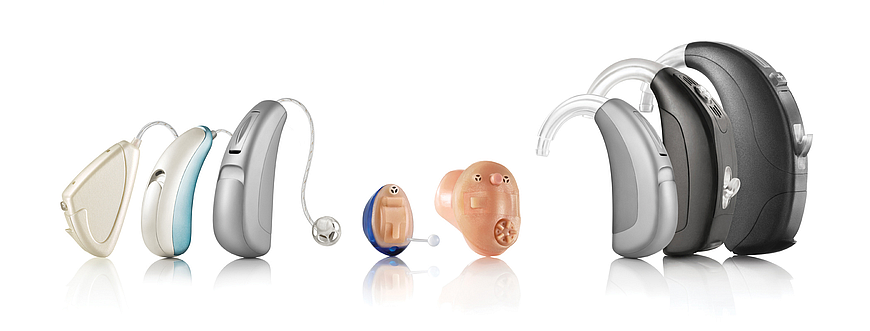
When deciding about hearing aids we help you decide what technology and size work best for you. Below is a brief overview of these topics.
Technology
Innovations in electronics and hearing aid design have created a revolution in hearing aid function. These improvements continue to make hearing aids more user-friendly and allow them to offer more real-world benefits to improve your hearing clarity.
Levels of Technology
Prescription hearing aids, like televisions, are offered in different levels of technology – basic, improved, and advanced. Each technology level is suited to an ideal type of user and needs.
- Basic technology – this technology is best suited to those with quiet lifestyles where the listening situation is easy and predictable. These aids can be programmed for most degrees of hearing loss but cannot filter out background noise in more active, busy environments. These are best suited to the budget buyer or those who primarily stay at home.
- Improved Technology – the “best bang for the buck”, these devices offer capabilities to lower background noise and improve listening comfort. Improvements such as automatic directional microphones, digital noise reduction, automatic feedback management, Bluetooth connectivity, and water resistance are all included in this level of technology. We find that most users benefit greatly from these innovations.
- Premium Technology – these represent the latest innovations in technology. The focus here is to improve listening ease by selectively focusing on speech, reduce interfering noise so the brain isn’t bothered by it. All of this works together to enhance word clarity through better high-frequency amplification and greater precision in frequency selection. Standard accessories include remote control and Bluetooth wireless connection devices for telephone and/or television.
During your initial appointment with Dr. Mills we will discuss your lifestyle and needs, the degree of your hearing loss and special needs uncovered in your examination. We then provide a recommendation that takes all of this insight into account. We don’t recommend hearing aids simply based on price but instead use a specific decision-making process to recommend exactly that you need – no more, no less.
This recommendation is different based on a variety of factors:
- your degree of loss
- the causes and factors that led to your hearing loss
- your age and length of hearing loss
- your word understanding ability in quiet and noise
- your dexterity
- preferences
- the level of your social and personal activity
Too often a hearing aid salesman will select based on your preferences – what you’re willing to purchase – instead of guiding you to what is best for your hearing. We always consider the needs of your hearing loss first, then discuss your personal preferences, likes, and dislikes.
Click here to download our guide on How to Select and Purchase Hearing Aids.
Hearing Aid Styles – How They Look
There are many styles of hearing aids. Your selection of the most appropriate device for your needs depends on several factors such as (1) your degree of the hearing loss, (2) features necessary to meet your individual needs, (3) your manual dexterity, (4) cost factors, and (5) cosmetic concerns. The most common styles are listed below:
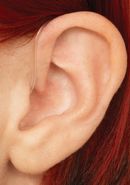 Open Fit: These small, mini behind-the-ear hearing aids that are the newest and most exciting devices today. A mini device is placed behind the ear, hidden from view, and a thin, clear tube is placed inside the ear canal. The canal is left open so normal sounds pass through unaffected and the hearing aid amplifies only those frequencies that are deficient. These are the most commonly used hearing aids and can be rechargeable and also wirelessly connected to your smartphone.
Open Fit: These small, mini behind-the-ear hearing aids that are the newest and most exciting devices today. A mini device is placed behind the ear, hidden from view, and a thin, clear tube is placed inside the ear canal. The canal is left open so normal sounds pass through unaffected and the hearing aid amplifies only those frequencies that are deficient. These are the most commonly used hearing aids and can be rechargeable and also wirelessly connected to your smartphone.
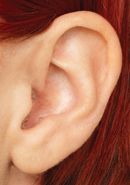 CIC: Completely-In-the-Canal aids are the tiniest hearing aids. They extend deep into the ear canal and are not visible from the front or even side. Due to their small size, they can be difficult to manipulate and usually require a “removal string” to extract from the ear. These aids completely occlude the ear canal and often provide a strong sense of ear fullness. Batteries in these must be changed every 4-5 days and they usually cannot connect to smart phones.
CIC: Completely-In-the-Canal aids are the tiniest hearing aids. They extend deep into the ear canal and are not visible from the front or even side. Due to their small size, they can be difficult to manipulate and usually require a “removal string” to extract from the ear. These aids completely occlude the ear canal and often provide a strong sense of ear fullness. Batteries in these must be changed every 4-5 days and they usually cannot connect to smart phones.
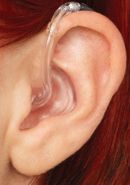 BTE: Behind-The-Ear hearing aids are the largest hearing aids and offer benefits not found in other styles. The aid sits hidden behind-the-ear with a custom earmold that sits comfortably in the ear. These are the most flexible of all hearing aids and offer the greatest number of features. These features can reduce background noise, enhance clarity, enhance telephone clarity, and provide the greatest amount of amplification. They are rechargeable or battery operated and feature the most wireless capabilities to connect to smartphones.
BTE: Behind-The-Ear hearing aids are the largest hearing aids and offer benefits not found in other styles. The aid sits hidden behind-the-ear with a custom earmold that sits comfortably in the ear. These are the most flexible of all hearing aids and offer the greatest number of features. These features can reduce background noise, enhance clarity, enhance telephone clarity, and provide the greatest amount of amplification. They are rechargeable or battery operated and feature the most wireless capabilities to connect to smartphones.
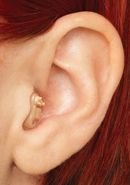 ITC: In-The-Canal aids fill inside the ear canal but do not extend into the bowl. These are the most popular size of all hearing aids. They require more dexterity to manipulate but can be easy to insert and remove.They are rechargeable or battery operated and feature wireless capabilities to connect to smartphones.
ITC: In-The-Canal aids fill inside the ear canal but do not extend into the bowl. These are the most popular size of all hearing aids. They require more dexterity to manipulate but can be easy to insert and remove.They are rechargeable or battery operated and feature wireless capabilities to connect to smartphones.
 ITE: In-The-Ear aids fill the entire ear opening and are the most noticeable of all hearing aids. They are usually the least expensive but easiest to operate. This is often the best choice for someone needing an aid that is to insert and manipulate. They are rechargeable or battery operated and feature the most wireless capabilities to connect to smartphones.
ITE: In-The-Ear aids fill the entire ear opening and are the most noticeable of all hearing aids. They are usually the least expensive but easiest to operate. This is often the best choice for someone needing an aid that is to insert and manipulate. They are rechargeable or battery operated and feature the most wireless capabilities to connect to smartphones.
Click here for some Frequently Asked Questions about hearing aids.
Is it true that Hearing Aids will help preserve my hearing?
Hearing aids do not stop hearing loss. However, studies have shown that the sound provided by hearing aids allow auditory pathways in the brain to remain open and functional. These pathways are important for speech understanding, clarity in background noise, and separating what you want to hear from what you don’t. Untreated hearing loss causes these pathways to atrophy and actually to be taken over by other senses. Multiple studies have shown that under-used hearing pathways are actually recruited by the tactile senses (touch). So, the idea of “use it or lose it” truly does apply to hearing.
Multiple other studies have shown that ears using hearing aids preserved better speech intelligibility than ears that had not benefited from hearing aid correction. The interesting factor in one study was that they examined a large group who had hearing loss in two ears but used a hearing aid in only one ear. The ear using the aid preserved 20-30% better understanding than the ear with no hearing aid.
I was told that Hearing Aids won’t help me
Hearing aids help 95% of people with hearing loss to some degree. While people who have mild to moderate hearing loss for a shorter period of time receive more optimal benefit, almost anyone with hearing loss will receive meaningful clarity improvement from hearing aids. Every hearing situation is different so every outcome with be somewhat different.
- An 82-year-old can expect a different improvement than a 62-year-old.
- A lifelong machinist exposed to 30 years of noise will receive different benefit from an office worker with no history of noise exposure.
- A person with no family history of hearing loss will receive different improvement compared to someone who has several family members with hearing loss.
No two people share the same genetics, medical history, work background, or noise exposure. As a result, no two people will have the same benefit from hearing aids. However, as a whole, most people with hearing loss achieve noticeably better hearing and clarity with hearing aids.
Realistic Expectations
It is important to understand Realistic Expectations about the improvement you will receive. If your expectation is to return your hearing to normal then you will be sorely disappointed. However, if you accept that your hearing will never return to “normal” BUT that it can be improved over it’s damaged level – then you will notice a return to more normal communication and an easier time listening to those around you.
Practical Advice for Communicating with Someone with Hearing Loss
- Speak clearly and naturally – It is not necessary to shout. Loud speech may overload their hearing and be painful. Maintain a normal tone of voice but articulate your words more clearly. Speak more at a slightly slower rate and you’ll automatically speak clearly.
- Move closer – Reduce the distance between you and the listener. Your listener will always hear you more clearly if you’re within 6 feet. Just assume they will never understand you from more than 10 feet away.
- Face the listener – Position yourself so that your listener can see your face and lips. Lip reading is instinctive – everyone does it even without knowing it. It is particularly important for those with impaired hearing.
- Attract the listener’s attention – Tired of repeating everything you say? Your listener will understand you the first time if you get their attention before speaking. This can be done by saying their name, touching them, or getting in their sight.
- Restate rather than repeating – If you have to repeat something try saying it a little different. Some words are more difficult to understand so restate it different words. If you first said “Let’s go to Olive Garden for supper”, repeat it by saying “I’d like to eat tonight at Olive Garden. Let’s go.”
- Be aware of the surroundings – Avoid trying to have conversations from one room to another or in rooms with distracting noises, e.g. washing machine, TV playing in background, dishwasher, etc.
- Be aware of listening limitations – Never put the hearing impaired listener under too much pressure. Remember that their hearing loss is as frustrating to them as it is to you.
- Understand that hearing loss can be tiring – When talking with your hearing impaired listener remember that it’s tiresome work to be attentive all day long. Anything you can do to help will be a welcome gift.
Do hearing aids need Batteries?
Not always. The latest hearing aids use rechargeable, lithium ion batteries like what is found in your cell phones. You simply charge them every night and a charge lasts 20-22 hours for a full day of use.
Some smaller hearing aids are not rechargeable and do require batteries. Typically they last 4-8 days, with the smaller hearing aid using a smaller battery with shorter the battery life.
All hearing aid batteries are “zinc-air.” The cell is filled with zinc that is activated when the factory-sealed sticker is removed and air combines with the zinc to turn the battery “on”.
Are all hearing aid Batteries the same?
No. It is important to recognize that your hearing aids sound only as good as the battery that is powering them. The electronics in your hearing aids depend on a reliable power source that is provided by a high-quality battery. Using cheap, store brand batteries will cost less money but these have up to 50% less activator (or charge) in them. With less power available the battery will constantly starve the electronics in your hearing aids. This ultimately leads to more distortion, less clarity, and less amplification. This is also true of very old hearing aid batteries.


